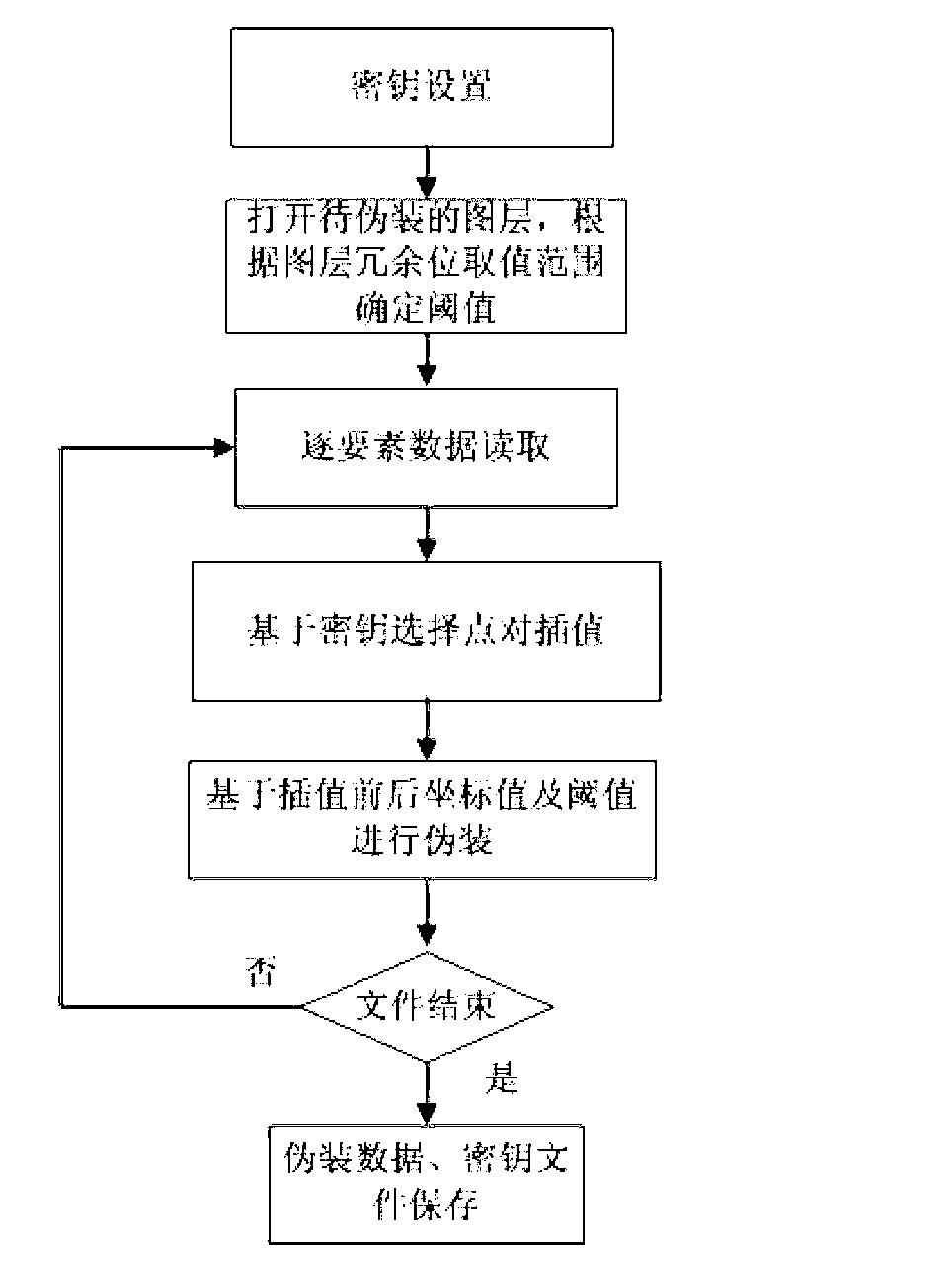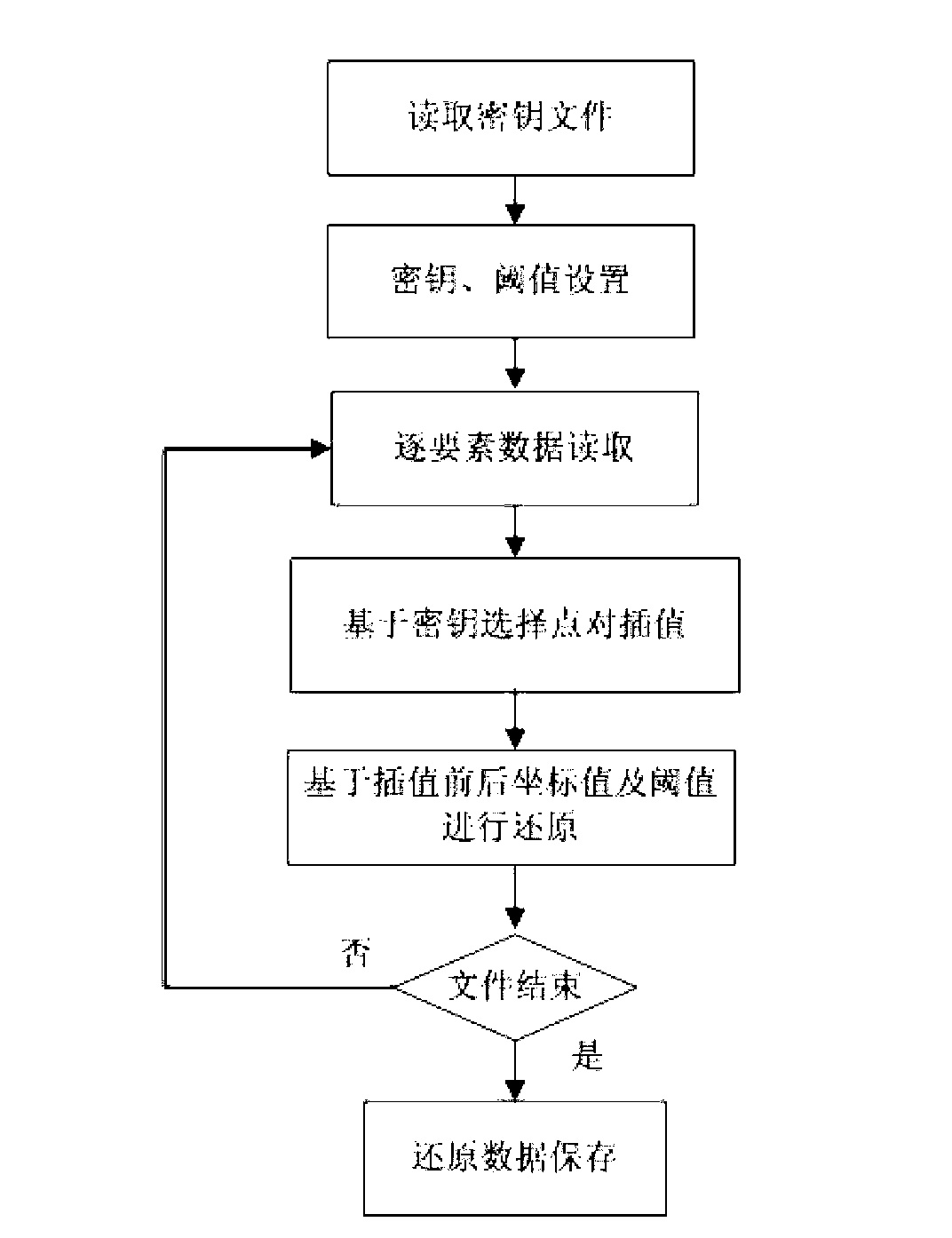Line and surface type global information system (GIS) vector data disguise and reduction method based on interpolation prediction
A vector data and interpolation technology, which is applied in the field of camouflage and restoration of line and surface GIS vector data based on the interpolation prediction method, which can solve problems such as complex spatial relationships and achieve the effect of data protection.
- Summary
- Abstract
- Description
- Claims
- Application Information
AI Technical Summary
Problems solved by technology
Method used
Image
Examples
Embodiment Construction
[0046] Further detailed description will be given below in conjunction with the accompanying drawings and embodiments.
[0047] In this embodiment, typical shp format vector data is selected, and the present invention is further described in detail for the whole process of data reading, camouflage, and restoration. The present embodiment selects the national 1:4 million provincial boundary layer data (such as image 3 ) as the experimental data, the original random sequence is set to "10011100101001010011". (1) Camouflage process:
[0048] Step 1: Set a random sequence "10011100101001010011" in binary format, the length n of which is 20.
[0049] Step 2: Open the provincial boundary vector data file, determine that the starting bit of the redundant data of this layer is the third decimal place, and thus determine that the value range of the redundant bit is (0.001, 0.01), in the interval (0.01 , 10) Take the threshold T=1. Read the spatial data of each element in turn, obtai...
PUM
 Login to View More
Login to View More Abstract
Description
Claims
Application Information
 Login to View More
Login to View More - R&D
- Intellectual Property
- Life Sciences
- Materials
- Tech Scout
- Unparalleled Data Quality
- Higher Quality Content
- 60% Fewer Hallucinations
Browse by: Latest US Patents, China's latest patents, Technical Efficacy Thesaurus, Application Domain, Technology Topic, Popular Technical Reports.
© 2025 PatSnap. All rights reserved.Legal|Privacy policy|Modern Slavery Act Transparency Statement|Sitemap|About US| Contact US: help@patsnap.com



